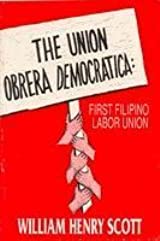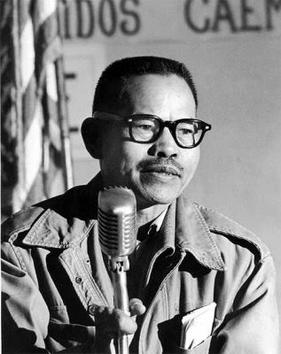Related Research Articles
Pinoy is a common informal self-reference used by Filipinos to refer to citizens of the Philippines and their culture as well as to overseas Filipinos in the Filipino diaspora. A Pinoy who has any non-Filipino foreign ancestry is often informally called Tisoy.
Carlos Sampayan Bulosan was a Filipino American novelist and poet who immigrated to the United States on July 1, 1930. He never returned to the Philippines and he spent most of his life in the United States. His best-known work today is the semi-autobiographical America Is in the Heart, but he first gained fame for his 1943 essay on The Freedom from Want.

America Is in the Heart, sometimes subtitled A Personal History, is a 1946 semi-autobiographical novel written by Filipino American immigrant poet, fiction writer, short story teller, and activist, Carlos Bulosan. The novel was one of the earliest published books that presented the experiences of the immigrant and working class based on an Asian American point of view and has been regarded as "[t]he premier text of the Filipino-American experience." In his introduction, journalist Carey McWilliams, who wrote a 1939 study about migrant farm labor in California, described America Is in the Heart as a “social classic” that reflected on the experiences of Filipino immigrants in America who were searching for the “promises of a better life”.

Fernando Amorsolo y Cueto was a portraitist and painter of rural Philippine landscapes. Nicknamed the "Grand Old Man of Philippine Art," he was the first-ever to be recognized as a National Artist of the Philippines. He was recognized as such for his "pioneering use of impressionistic technique" as well as his skill in the use of lighting and backlighting in his paintings, "significant not only in the development of Philippine art but also in the formation of Filipino notions of self and identity."
Epifanio San Juan Jr., also known as E. San Juan Jr., is a known Filipino American literary academic, Tagalog writer, Filipino poet, civic intellectual, activist, writer, essayist, video/film maker, editor, and poet whose works related to the Filipino Diaspora in English and Filipino writings have been translated into German, Russian, French, Italian, and Chinese. As an author of books on race and cultural studies, he was a "major influence on the academic world". He was the director of the Philippines Cultural Studies Center in Storrs, Connecticut in the United States. In 1999, San Juan received the Centennial Award for Achievement in Literature from the Cultural Center of the Philippines because of his contributions to Filipino and Filipino American Studies.
Little Manila is an area in Stockton, California that was inhabited by predominantly Filipino American agricultural workers from the 1930s on.
Ernesto Mangaoang was a Filipino American labor organizer. A communist and longtime leader of immigrant Filipino laborers, Mangaoang was closely associated with Chris Mensalvas, and was a personal friend of the famous Filipino American intellectual and activist Carlos Bulosan.

The Unión Obrera Democrática Filipina was a national trade union center in the Philippines. The organization was considered as the first-ever modern trade union federation in the history of the country, composed of unions from various labor industries; earlier and prior labor groups had been more of mutual aid societies and guilds. The organization had thirty-three affiliated trade unions as of 1902. In 1903, the organization counted 150 affiliated unions, with around 20,000 members in the Manila area. At its peak, the Union Obrera Democratica had approximately 150,000 members in eight provinces of Luzon. Its members were also the very first members of the Philippine Independent Church when it was proclaimed in 1902.

The history of Filipino Americans begins in the 16th century when Filipinos first arrived in what is now the United States. The first Filipinos came to what is now the United States due to the Philippines being part of New Spain. Until the 19th century, the Philippines continued to be geographically isolated from the rest of New Spain in the Americas but maintained regular communication across the Pacific Ocean via the Manila galleon. Filipino seamen in the Americas settled in Louisiana, and Alta California, beginning in the 18th century. By the 19th century, Filipinos were living in the United States, fighting in the Battle of New Orleans and the American Civil War, with the first Filipino becoming a naturalized citizen of the United States before its end. In the final years of the 19th century, the United States went to war with Spain, ultimately annexing the Philippine Islands from Spain. Due to this, the history of the Philippines merged with that of the United States, beginning with the three-year-long Philippine–American War (1899–1902), which resulted in the defeat of the First Philippine Republic, and the attempted Americanization of the Philippines.
People of Filipino descent make up a large and growing part of the State of Hawaii's population. In 2000 they were the third largest ethnic group and represented 22.8% of the population, but more recently, according to the 2010 United States Census data indicates they have become the second largest ethnicity in Hawaii, after Whites.

Modesto "Larry" Dulay Itliong, also known as "Seven Fingers", was a Filipino-American union organizer. He organized West Coast agricultural workers starting in the 1930s, and rose to national prominence in 1965, when he, Philip Vera Cruz, Benjamin Gines and Pete Velasco, walked off the farms of area table-grape growers, demanding wages equal to the federal minimum wage, that became known as the Delano grape strike. He has been described as "one of the fathers of the West Coast labor movement."

Anti-Filipino sentiment refers to the general dislike or hatred towards the Philippines, Filipinos or Filipino culture. This can come in the form of direct slurs or persecution, in the form of connoted microaggressions, or depictions of the Philippines or the Filipino people as being inferior in some form psychologically, culturally or physically.
The Watsonville riots was a period of racial violence that took place in Watsonville, California, from January 19 to 23, 1930. Involving violent assaults on Filipino American farm workers by local white residents opposed to immigration, the riots highlighted the racial and socioeconomic tensions in California's agricultural communities.

Plaza Moraga is a public square in Manila, Philippines. Serving as the gateway to Manila's Chinatown of Binondo, the plaza is located at the foot of Jones Bridge at the west end of Escolta Street. It was named after a Franciscan friar, Fr. Fernando de Moraga and it is by the opinion of many, that were it not for him, the history of the Philippines would turn out differently from what it is now.
Chris Delarna Mensalvas, also archived as Chris D. Mensalvas and Chris D. Mensalves was a Filipino American union organizer most active during the 1940s and 1950s. A communist and leader of the immigrant Filipino labor movement in the Pacific Northwest, Mensalvas was closely associated with famous Filipino American author and activist Carlos Bulosan as well as Ernesto Mangaoang and Philip Vera Cruz.

Fernando Canon Faustino y Alumno , was a Filipino revolutionary general, poet, inventor, engineer, musician, and the Philippines' first National Chess Champion in 1908.

Little Manila Is in the Heart: The Making of the Filipina/o American Community in Stockton, California by Dawn Bohulano Mabalon is a book with three parts that depict the formation of Filipina/o American identities and community in the Little Manila in Stockton, California during the twentieth century. The book touches on issues including immigration, colonialism, race, gender, labor, and activism. Bohulano Mabalon draws on rich oral histories as well as historical archives such as the National Pinoy Archives and Filipino American National Historical Society to provide an analysis on Filipina/o experience. The book won the honorable mention for the Frederick Jackson Turner Award by the Organization of American Historians in 2014.

Dawn Bohulano Mabalon was an American academic who worked on documenting the history of Filipino Americans. Mabalon was born in Stockton, and earned her doctoral degree from Stanford University; she later taught at San Francisco State University. Mabalon was the co-founder of The Little Manila Foundation, which worked to preserve Little Manila in Stockton, California. During her life, her work elevated the topic of the history of Filipino Americans, in Central California in particular.

Robyn Magalit Rodriguez is an Filipina American professor, author, and activist. She is currently a professor and chair of the Department of Asian American Studies at the University of California, Davis. In 2018, Rodriguez founded the Bulosan Center for Filipino Studies; which is noted to be the first Filipino Studies center in the United States. She is a former associate professor at Rutgers.

Flora Arca Mata was an American teacher in Stockton, California. She became the first Filipino American teacher in California. In 2019, a new elementary school was named after her in the Stockton Unified School District.
References
- 1 2 3 4 5 6 Mabalon, Dawn Bohulano (29 May 2013). Little Manila Is in the Heart: The Making of the Filipina/o American Community in Stockton, California. Duke University Press. p. 39. ISBN 9780822395744 . Retrieved 22 March 2023.
- ↑ Mabalon, Dawn B. (2008). Filipinos in Stockton. Arcadia Pub. ISBN 9780738556246 . Retrieved 22 March 2023.
- ↑ Trethan, Phaedra (19 November 2021). "Author gave voice to Filipino migrants". Cherry Hill Courier-Post. USA Today Network.
- ↑ The SAGE Encyclopedia of Filipina/x/o American Studies. SAGE Publications. 3 November 2022. ISBN 9781071829011 . Retrieved 22 March 2023.
- ↑ Albano Risso, Rose (9 February 2009). "Pictures do paint a thousand words, even snapshot ones". Manteca Ripon Bulletin. Retrieved 22 March 2023.